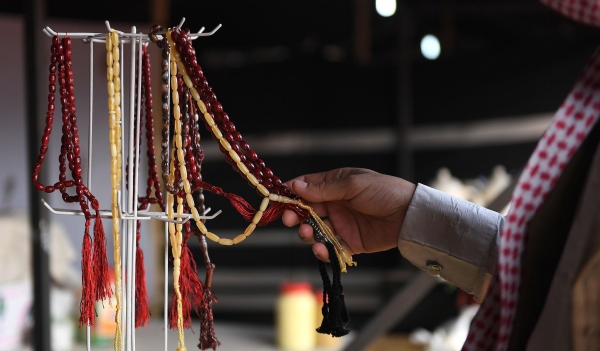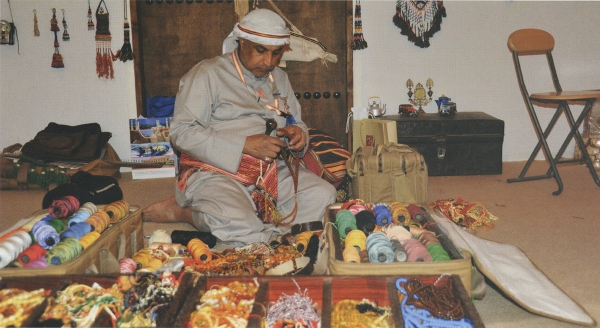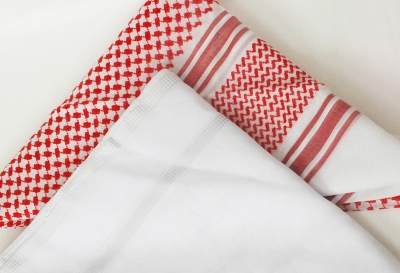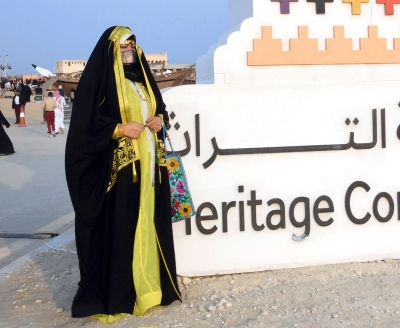



Al-Subha or Al-Misbaha (Prayer Beads) is one of the traditional handicraft products in the Kingdom of Saudi Arabia. Its craftsmanship has been passed down through craftsmen across various provinces of Saudi Arabia, gaining such popularity that it became an integral part of Saudi cultural identity.
Making of Al-Subha historically
Making Al-Subha dates back around five thousand years to the Sumerians. It was also known in several other civilizations, including the Pharaonic, Indian, and Persian. Over time, it became one of the authentic traditional crafts in Saudi Arabia. Al-Subha is used by the elderly and the youth as gifts, for prayer, leisure, or as a symbol of social prestige.
Making of Al-Subha in Saudi Arabia
Making of Al-Subha requires great skill. Artisans begin by using traditional turning techniques, cutting raw materials, shaping the ends, drilling, and forming beads. They then sand, polish, and thread the beads.
In Saudi Arabia, prayer beads are made using various artistic techniques. They are often made from black coral (Antipatharia), a black marine wood extracted from the depths of the sea. The coral is cut into small pieces, soaked in water to prevent cracking, and sometimes inlaid with lead or coated with silver.
Making a single set of Al-Subha by hand from olive pits takes around five days. In addition to bright colors, silver and other metals are added, and the pits are infused with oud oil to give them a lasting fragrant scent.
Materials used in making Al-Subha
The materials used to make Al-Subha vary and include natural materials, such as ivory, wood, and stones; semi-natural materials, such as organics; and manufactured materials like bakelite, fiber, and plastic. Beads also come in various cuts, including round, olive-shaped, Al-Zourdi, barrel-shaped, and pinecone-shaped. Al-Amiyyat or head bead of Al-Misbaha also takes different forms, such as mosque minaret, marine minaret in Al-Azhari style, Al-Malawlowi, Iraqi, and bell shapes.
The aesthetic and monetary value of Al-Subha varies. Some are expensive and made from gemstones like emerald, pearl, coral, ruby, peridot, sapphire, and diamond. Others are crafted from agate, turquoise, gold, silver, black coral, coconut wood, ebony inlaid with gold and silver, and amber. Meanwhile, more affordable types of Al-Subha are made from plastic, glass, ordinary wood, common stones, or fiberglass.
Measurements of Al-Subha
Al-Subha made from semi-precious stones vary in size; however, they typically have thirty-three beads, a head bead, and two spacers, with an average bead diameter of six mm, although there may be exceptions in size or diameter. There is a second size, the modern type, in which Al-Misbaha consists of forty-five or sixty-six beads in addition to the head bead and spacers. Sometimes, the diameter of a single bead is similar to the first type.
The most common number of beads, typically used for religious purposes, consists of ninety-nine beads plus a head bead, spacers, and other components, totaling around 101 pieces. These beads generally have a diameter of less than five mm. However, this type of stone Subha is not in high demand.
Al-Subha markets in Saudi Arabia
Al-Subha has designated markets, particularly in historical areas, and shops selling gifts and handicrafts throughout Saudi Arabia. Some markets are renowned for selling Al-Subha, such as Al-Subhiya Market in Historic Jeddah, also known as Al-Khaskiyah Market, where Al-Subha was traditionally crafted and sold.
Related quizzes

